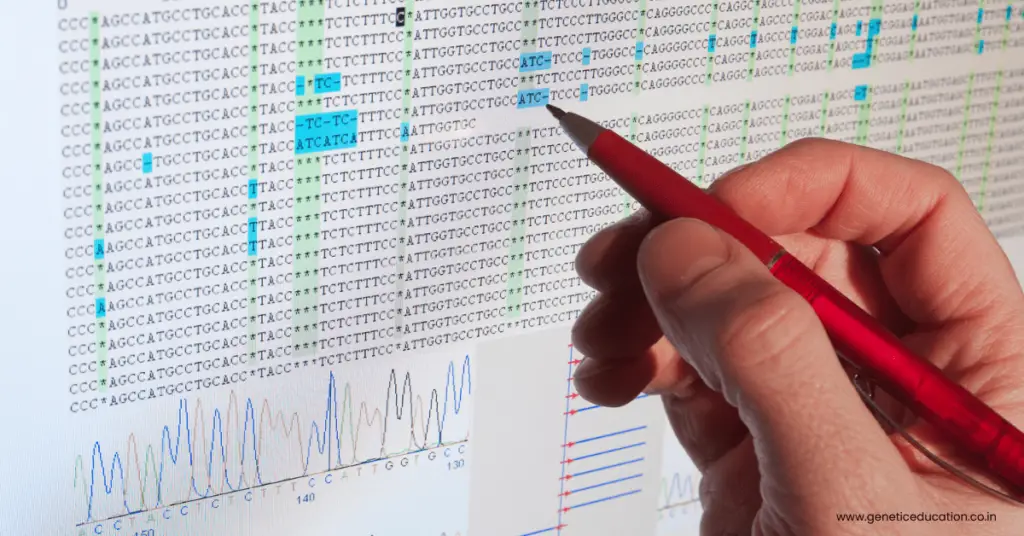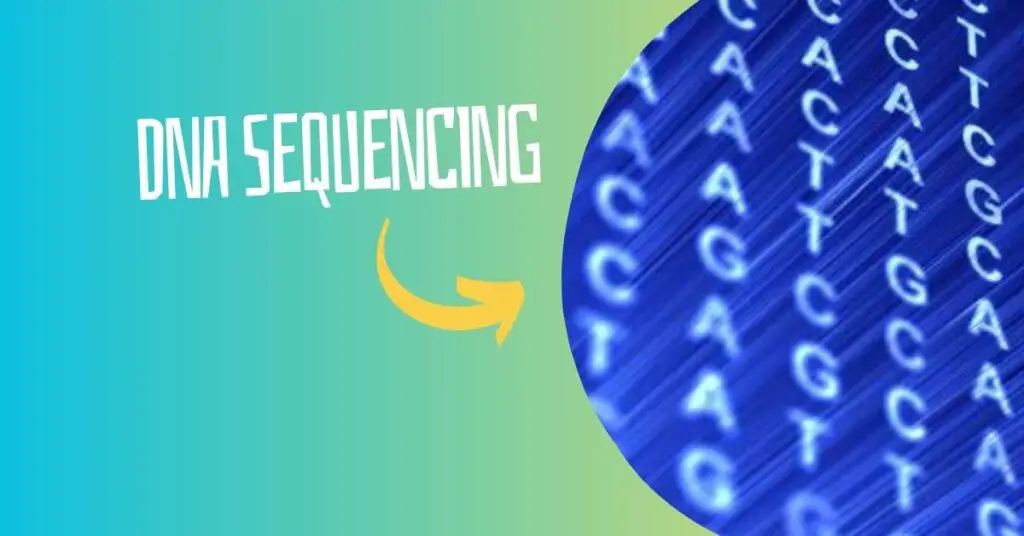“Explore the concept of pyrosequencing, its principle, process, applications, advantages and limitations in the present article.”
DNA Sequencing is a process to read the order of nucleotides present in a sequence, gene or genome. The first fully adopted technology was Sanger sequencing developed by Sanger and co-workers in the early 80s.
2000 was the era of high-end and high-throughput sequencing technology. While new techniques and chemistries were introduced, older and useful techniques were updated into automation. Pyrosequencing was developed during this era.
Pyrosequencing was considered as an early NGS platform as it was enabled with high throughput analysis. It can perform more operations than the conventional Sanger sequencing approach and become popular immediately.
Unlike the conventional Sanger sequencing, the pyrosequencing relies on the unique chemistry that detects the pyrophosphate release during the synthesis. Confusing?
No look further!
Learn about the simplest concept of pyrosequencing, its principle, process, advantages and limitations in this article. In addition, I will also explain the guide to study and understand the pyrosequencing results.
Stay tuned.
Key Topics:
What is Pyrosequencing?
Pyrosequencing works on the principle of sequencing by synthesis and detects the inorganic pyrophosphate (PPi) released during the reaction. The technique was developed by Pal Nyren and co-workers at the Royal Institute of Technology, Stockholm, Sweden in 1985.
Initially, it was capable enough to sequence <100 nucleotides in a single run. However, major advancements and automation were made during the 2000s. The emergence of 454 pyrosequencing was the first and only high-throughput next-generation technique at that time.
Pyrosequencing is a short-read sequencing platform that can effectively sequence 100 to 300 bp long DNA fragments in a massively parallel sequencing reaction. Many samples can be run in a single reaction which makes it a high-throughput sequencing technique.
The main advantage of the present technique is that it doesn’t need extensive radiolabeling and gel electrophoresis. We can investigate results using a pyrogram. I will explain pyrogram later in this article.
Let’s start with the principle
Principle of Pyrosequencing
In sequencing by synthesis reaction, the formation of a phosphodiester bond between complementary nucleotides releases pyrophosphate. This released pyrophosphate goes through a series of enzymatic reactions ultimately emitting light. The emission of light can be detected with the help of a pyrogram showing different peaks and indicating the presence of specific nucleotides.
Now, we will understand the concept in detail.
Pyrosequencing method
DNA is made up of sugar, nitrogenous bases and phosphate, we all know that. Three different phosphates (triphosphate) stabilize the DNA. Using the free 3’ OH end of the last nucleotide, the DNA polymerase enzyme synthesizes the DNA. And release a phosphate.
Pyrosequencing uses the same natural DNA synthesis mechanism to perform the sequencing reaction. DNA polymerase present in the reaction adds nucleotides to the single-stranded template. But the problem is, how can we know if the correct complementary nucleotide is added or not?
We need confirmation on the addition of a correct nucleotide and some sort of signal that validates the addition. Scientists solved this problem using two mechanisms, first, by detecting the pyrophosphate, nucleotide addition can be validated, and second a light emission from the chemical (enzymatic) reaction provides a positive sequencing signal.
Enzymes DNA polymerase, ATP Sulfurylase, Luciferase and Apyrase catalysts various steps in the reaction while Adenosine Phosphosulfate and Luciferine are used as a substrate during the reaction.
All these chemical reactions occur in a cascade of enzymatic processes. Want to know how the reaction occurs? Let’s move ahead.
Read more: 47 Types of Sequencing Techniques You Should Know About.
Pyrosequencing Chemical Reaction
Requirements:
- DNA strand: This strand will act as a template strand; whose sequence is to be known.
- Primer: It will provide 3’OH for DNA polymerase.
- Deoxynucleotides: dNTPs (dCTPs, dTTPs, dGTPs, dATPaS). Here dATPs are replaced with dATPaS. Luciferase can not efficiently detect dATP, therefore, deoxyadenosine alpha-thio triphosphate is used.
- DNA polymerase: Helps in the synthesis of new strands. The polymerase used here is a bacterial Kleno fragment without the exonuclease activity. This can reduce background signals and improve sensitivity.
- Enzymes: ATP Sulfurylase, Luciferase, Apyrase
- Substrate: Adenosine Phosphosulfate, Luciferine.
First, DNA polymerase catalyzes the reaction of the addition of a dNTP. This will release PPi (pyrophosphate). The addition of one dNTP releases a single PPi.
>> (ssDNA)n + dNTP → (ssDNA)n+1 + PPi
Now our dNTP addition is completed, we have one pyrophosphate. For validation, we need to detect the pyrophosphate. In the reaction, through multiple enzymatic steps, the phosphate is detected in the form of light.
Remember, Adenosine 5’ Phosphosulfate is used as a substrate in this reaction.
>> APS + PPi → ATP + sulfate
The ATP works as a cofactor for the enzyme luciferase and converts the luciferin to oxyluciferin and light.
>> ATP + luciferin + O2 → AMP + PPi + CO2 + Oxyluciferin + Light
The light is detected by the camera (charge-coupled device) and generates a peak in the graph. The high of the peak is directly proportional to the amount of light generated and vice versa.
Now, here Apyrase enzyme performs an important function of cleaning the unincorporated nucleotides, ATPs and pyrophosphates from the reaction. During the sequencing reaction, what we do is, we spay only a single type of nucleotide in a single run.
The accumulation of PPi and unincorporated nucleotides can interfere with subsequent nucleotide incorporation. Thus, it needs to be cleared or removed before the spay of second nucleotide types.
In the reaction, the apyrase converts the ATP into AMP and dATP into ADP and degrades them along with the residual PPi in the reaction. After the washing, another dNTP is sprayed.
dNTP → dNDP + dNMP + Phosphate (Apyrase)
ATP → ADP + AMP + Phosphate (Apyrase)
This is the chemistry and four different reactions behind the concept of pyrosequencing. Now, see how it works.
How does pyrosequencing work?
Along with the unique working chemistry, pyrosequencing uses a unique Picotiter Plate for sequencing. Each PTP contains many small wells and DNA-binding beads on the surface.
A DNA fragment attaches to each single DNA binding bead present on the surface of each well. Each enzymatic reaction occurs in each well during the sequencing. Each well contains sequence-specific primers and DNA polymerase.
Now, each nucleotide is sprayed once on the PTP. For instance, dCTP.
The dCTP binds to all the DNA fragments present in all the wells whenever it finds its complementary nucleotide. After that, the PTP is washed to remove unincorporated nucleotides and PPi.
After that, dGTP, dATP and dTTP are sprayed subsequently. For a single positive four different dNTPs are sprayed simultaneously.
After each nucleotide reaction, peaks are generated in the pyrogram based on the succession of reactions. The height of the peak represents the number of consecutive nucleotide additions.
For instance, if there are three consecutive “C” in the sequence, it will emit more light and a larger peak. If there is only a single “C” in the sequence at a position it will emit less light and a smaller peak. This will allow real-time sequencing monitoring.
Note that the Apyrase reaction reduces background noise during sequencing by removing the unused dNTPs and increases the sensitivity without compromising the accuracy.
Steps and Procedure
- A high-quality and quantity genome DNA is used for pyrosequencing. Genomic, plasmid or any type of DNA can be used.
- Using a pre-labeled PCR primer (biotinylated) the template DNA region is amplified.
- Now the amplified single-stranded and labeled product is added to the pyrosequencing.
- Here, it binds with the sequencing primers and using the DNA polymerase initiates the DNA synthesis reaction.
- Using a 4 enzyme reaction cascade, the nucleotide incorporation is detected as a pyrogram peak.
- Each dNTP has been dispensed at a time in the PTP chamber.
- The pyrogram has been studied to understand the results and prepare the sequence.
Pyrosequencing Results
Pyrosequencing results are represented as a pyrogram. Varied-sized peaks are generated based on the amount of light detected by the camera.
The light emitted can be represented graphically. As shown in the figure below the Y axis shows the intensity of light or peaks and the X axis shows the nucleotide sequence.
The peaks tell us about the incorporation of dNTP in the sequence.
Advantages
Pyrosequencing is the first sequencing platform to start providing real-time sequencing data. Scientists can monitor the sequencing process and progress.
It’s the first high-throughput sequencing platform that can simultaneously run many samples. Pyrosequencing actually started the era of large-scale genome sequencing.
Pyrosequencing doesn’t need fluoro-labeling of nucleotides. Where other techniques such as Sanger and Illumina sequencing-by-synthesis use labeled nucleotides, it uses natural nucleotides only.
Due to this reason, it saves the cost and simplifies the experimentation.
In addition, it doesn’t require PAGE or capillary electrophoresis for analysis. The sequencing results directly convert into a visible and measurable pyrogram peak.
Pyrosequencing enables quantitative analysis of DNA methylation.
In comparison with other techniques, it needs fewer sample preparation steps, pre-processing procedures and reagents.
The present sequencing procedure is highly sensitive due to the secondary detection system (detection of pyrophosphate).
Due to these advantages, it can effectively detect SNPs and indels.
Limitations
Pyrosequencing can be considered the first frontier in the NGS era, but still faced many setbacks due to the complex setup and various enzymatic cascades.
So the first limitation is the use of various enzymes in the reaction that make the overall experiment sensitive and error prone.
Pyrosequencing can effectively sequence 100 to 300 bp DNA fragments, whereas Sanger sequencing can sequence up to 1000 bp DNA fragments accurately and effectively.
It encounters sequencing errors and artifacts, particularly for the homopolymer regions. The presence of repetitive single nucleotide pase sequencing challenge for pyrosequencing.
In addition, it also faces difficulties in sequencing high GC-rich and repetitive sequence regions.
Pyrosequencing is a costly and error-prone sequencing procedure.
It’s a time-consuming sequencing platform.
Pyrosequencing vs Sanger sequencing
| Feature | Pyrosequencing | Sanger Sequencing |
| Method | Sequencing by synthesis | Chain termination |
| Throughput | High | Low |
| Read length | Short to medium | Medium to long |
| Real-time sequencing | Yes | No |
| Detection method | Luminescence | Fluorescence |
| Labeling of nucleotides | No | Yes |
| Sequence accuracy | High | High |
| Homopolymer accuracy | Moderate | High |
| Cost | Expensive | Moderate |
| Equipment complexity | High | Moderate |
| Sample preparation | Less complex | More complex |
| PCR requirement | Yes | Yes |
| Sensitivity to DNA quality | High | Moderate |
| Applications | High-throughput sequencing, SNP analysis, methylation analysis | Sanger sequencing confirmation, targeted sequencing, mutation detection |
Wrapping up
Pyrosequencing played a pivotal role in the advent of genome sequencing and the Next-Generation Sequencing (NGS) era, marking one of the earliest high-throughput sequencing platforms.
Despite its limitations, pyrosequencing has earned a prominent position in the sequencing industry owing to its innovative approach. The 454 pyrosequencing platform stands out as a leading and enduring sequencing technology.
Additionally, modifications such as Ion Torrent (proton) sequencing have further enhanced speed, detection sensitivity, and throughput, contributing to the continued evolution of pyrosequencing methodology.
I hope you like this article. Do share and subscribe to our blog.
Resources:
Siqueira JF Jr, Fouad AF, Rôças IN. Pyrosequencing as a tool for better understanding of human microbiomes. J Oral Microbiol. 2012;4. doi: 10.3402/jom.v4i0.10743. Epub 2012 Jan 23. PMID: 22279602; PMCID: PMC3266102.
Ronaghi M. Pyrosequencing sheds light on DNA sequencing. Genome Res. 2001 Jan;11(1):3-11. doi: 10.1101/gr.11.1.3. PMID: 11156611.
Harrington CT, Lin EI, Olson MT, Eshleman JR. Fundamentals of Pyrosequencing. Archives of Pathology & Laboratory Medicine. 2013;137(9):1296-1303. doi:https://doi.org/10.5858/arpa.2012-0463-ra.



